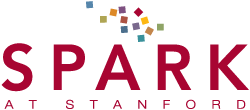Bridging The Gap

Frustrated that your scientific discovery is not moving to industry?
February 19, 2020
Academic scientists are often confused why their breakthrough research – and what they consider translatable findings – remain on the pages of scientific journals and are not stirring the pharmaceutical industry to develop them into drugs.
We academics were given many reasons for the flaws of academic research, however, a substantial number of first-in-class discoveries originate from academic research (see also here).
More was needed, as industry wants academics to take the research further. One anecdote calls it the unbaked cake phenomenon: academic researchers show up with flour and sugar, when investors and potential partners want a fully baked cake.
Universities need more effective partnerships with experts from the pharma and biotech industry to bring basic biomedical discoveries to patients, and we also need to educate our students and fellows – the future workforce of the pharmaceutical industry.
These are the missions of SPARK at Stanford, and we’re succeeding. The challenges and SPARK’s role in addressing them were recently highlighted in an article published in the Washington Post.
SPARK has been working with Stanford faculty and students to advance academic drug discovery for the past 13 years. Each year SPARK selects projects from Stanford affiliates and provides hands-on advising and funding, including weekly meetings with industry advisers with expertise in product development, clinical care, and business, to get the products from bench to bedside.
With the help of over 100 industry expert volunteers, a two-year education program for our faculty and students and $50,000/year – over 60% of our approximately 130 projects are licensed by the pharmaceutical industry (existing or startups) or/and move to clinical studies.
The SPARK model is spreading and is now initiated or operating in ~70 academic institutions in over 20 countries on all major continents.
We’ve learned a lot along the way from our successes as well as failures. As such, we are starting this blog to share our insights with the Stanford community and beyond.
We’ll be showcasing case stories from the program, diving deeper into what makes the SPARK model successful, and highlighting challenges faced by the field and how SPARK overcomes them.
For more about SPARK and SPARK GLOBAL visit our websites and follow us on Twitter @SPARK_Stanford. Stay tuned!
